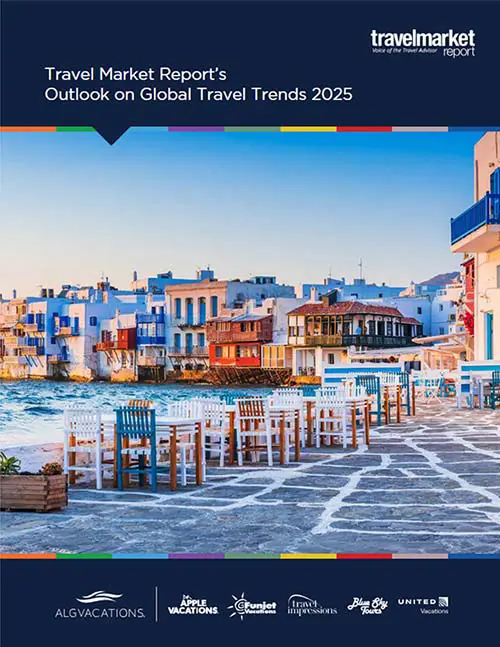The incidences of identity fraud grew 16% from 2015 to 2016,
affecting more than 15 million consumers and causing an aggregate of $16 billion in fraud losses, according Javelin Strategy & Research’s 2017 Identity Fraud Study. Travelers, who are increasingly dependent on their credit cards, need to be on alert and implement best practices to protect themselves.
Here are a number of recommended precautions to take when traveling in order to protect yourself from credit card fraud:
1. Book and order over secure websites or through travel agencies you know and trust.
Card not present (CNP) fraud increased by 40% in 2016. Travelers must be on guard, even before they leave their home,to book travel only via secure and trusted sites and agencies.
Note the https:// URL address, which should be found on payment pages, as opposed to http:// address. An https-protected page assures a connection is encrypted by Transport Layer Security, or its predecessor, Secure Sockets Layer. Only submit your credit card details over https:// protected pages.
Pay attention to the color and symbols on the URL address line. A green address line signifies a secure site, while a red address line appears on a potentially malicious URL. In the below URL for Amazon, on Chrome, the green padlock with the word “secure” signifies a protected site.
Each browser uses different symbols, but if you pay attention, you can easily spot the symbol for a safe site as opposed to a risky or dangerous one. Fraudsters have created fake booking sites that look very much like genuine sites, so be aware of deals that are too good to be true.
Try your best not to provide payment information over free WiFi connections, such as those found in hotels or cafes when travelling. Finally, take warnings seriously, never providing confidential data on a website which your browser has specifically warned you about.
2. Protect your card and information at all times.
Credit cards or wallets can be stolen and used for both card not present fraud and stolen identity fraud. More sophisticated fraudsters steal both the credit card data and the PIN code via skimmers placed in ATMs or payment terminals, together with cameras or other surveillance methods.
Another common scam involves a call from what is apparently the hotel front desk asking for your credit card number confirmation. When the number they claim to have is confirmed wrong, they request the correct number.
To protect yourself, keep your credit card safe and within your view at all times. Never give out your credit card number over the phone, unless you are absolutely sure who is on the receiving end, and never provide your PIN code.
Here are a few more tips:
- Make sure no one is watching when you type in your PIN code, and use bank ATMs only.
- Don’t be tempted to follow someone who directs you to a better ATM.
- Insist on paying bills at the table, not allowing waiters to take your credit card to the register. Accompany them if remote payment is not an option.
- Make sure that your PIN number is saved in a separate location, and not within your wallet.
3. Use secure payment alternatives.
There is no reason to take all of your credit cards with you when you travel. When possible, take only EMV-protected cards that have a chip to protect against skimming. Further protect yourself by investing in an RFID blocking wallet, which protects against newer RFID-enabled skimming technologies.
NFC mobile payments, in which users tap their phones as a method for payment, or e-wallets, in which payment details are stored on mobile apps, offer additional layers of protection. The first layer of protection is your responsibility – be sure to insert a password protecting the usage of the phone itself, and make sure to use a password that is not easy to crack. An additional password will be required to confirm purchase adding another layer of protection.
There are many
benefits of paying with e-wallets, such as ease of use and speed. One of the key benefits is the security e-wallets offer. Payment data stored on an e-wallet is encrypted, and not stored on your phone. Retailers do not receive this data upon payment either, instead a unique transaction number is used to confirm payment.
Another secure payment method combines QR code protected payments with mobile payments. Travelers can scan a QR payment code for their purchases and make their payments using their mobile wallets or e-wallets. In this case, a unique transaction is established, matching the QR payment code, with
secure mobile payment method.
4. Sign up for account alerts and monitor your spending.
You can further safeguard yourself by setting up alerts before you leave home. When suspicious activity is identified, such as a high value purchase, an automated message will be sent to you by email or SMS to ensure early identification of credit card fraud. Monitor your spending via online bank or credit card sites while you are away and for a few days after your return.
When traveling abroad, taking security measures into account is a must. The last thing you want is to deal with a fraudulent circumstance that could have been avoided – especially when on vacation. Taking the extra step to secure payment information is essential. Don’t regret later what you could have prevented now.
Eran Feinstein is the founder of Direct Pay Online, a global e-commerce and online payments solutions provider for the travel and related industries. With over 14 years of experience leading technology, sales, marketing and operation teams, Eran is an authority in the East African e-commerce and payments arena. He’s also an avid marathon runner.


























